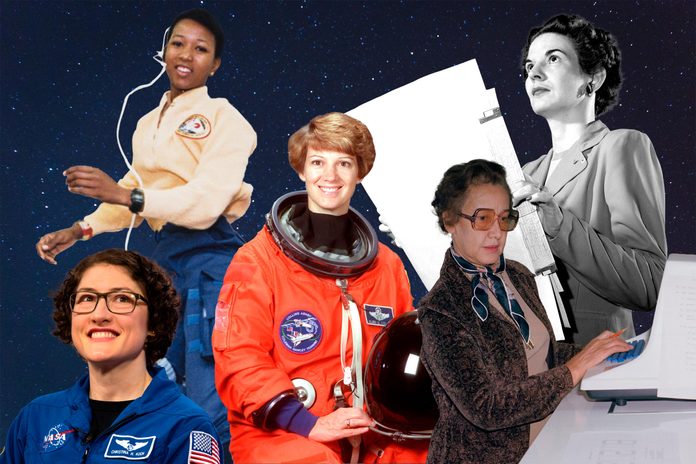
The real stars: the women of NASA
The National Aeronautics and Space Administration—better known as NASA—is primarily thought of as a boys’ club, and in many ways, it has been. But among the many facts about NASA that you should know are the stories of the brilliant women who’ve made extraordinary contributions over the course of NASA’s history. These women pioneers have changed the face of NASA and the aerospace profession in general and accomplished all sorts of amazing female firsts.
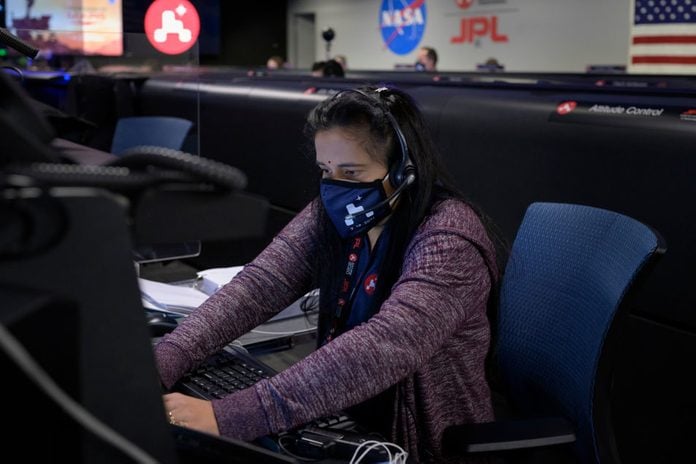
Swati Mohan was inspired by Star Trek
The NASA engineer who announced that the Perseverance rover had landed on Mars in February 2021 has skyrocketed into the public view—and deservedly so. Mohan, who has degrees from Cornell and MIT, emigrated from India to the United States at just a year old. When she was nine, she was wowed by a Star Trek episode that made her fall in love with the cosmos. “I remember thinking ‘I want to do that. I want to find new and beautiful places in the universe,'” she said in a NASA interview. She considered becoming a pediatrician before her fascination with space was rekindled by a physics class.
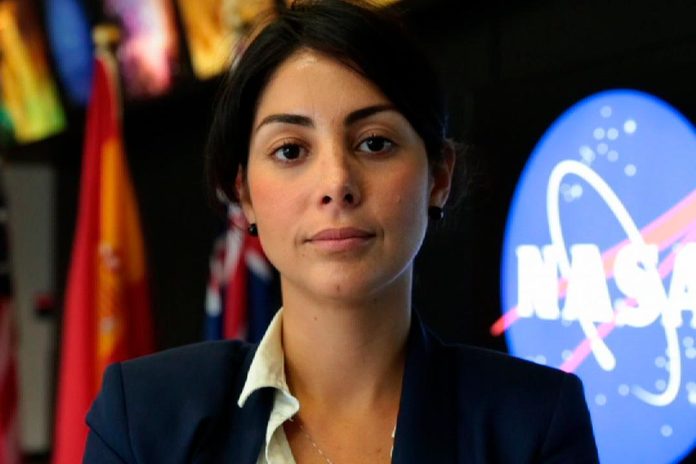
Diana Trujillo moved to the United States with $300
Another incredible woman who has been one of the faces of the Perseverance mission is Diana Trujillo, the flight director of the Mars 2020 mission. Her story is pretty incredible: Born and raised in Colombia, she moved to the United States at 17 with a mere $300 in her pocket—and no knowledge of English! She worked as a domestic worker to raise money for English classes, eventually going to college for space science and aerospace engineering, and becoming the first Latina woman admitted to the NASA Academy. In addition to directing the Mars 2020 mission, she also hosted NASA’s first-ever Spanish-language broadcast of a planetary landing.
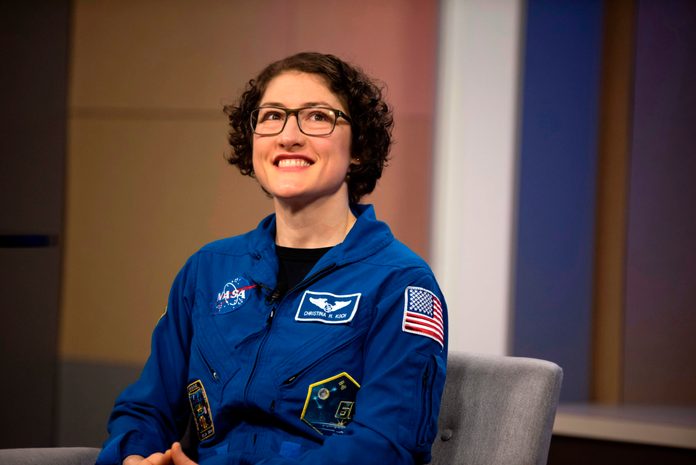
Christina Koch holds the NASA record for the longest single spaceflight by a woman
October 2019 saw the first-ever all-female spacewalk, conducted by Jessica Meir and Christina Koch—who were already best friends before they achieved this major milestone together. But Koch didn’t stop achieving. A mere two months later, in December, she set the NASA record for the longest single spaceflight completed by a woman: December 28 was her 289th day in space. And she stayed until the following February, bringing her record-breaking total to 328 days! Only retired astronaut Scott Kelly was on a longer single spaceflight for NASA (340 days).
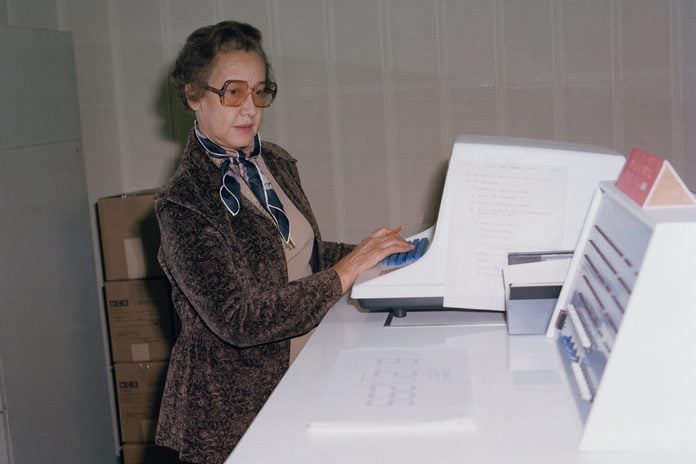
The Hidden Figures women were even more amazing in real life
The 2017 film Hidden Figures shone a much-needed light on three African-American women who worked for NASA as human computers in the 1960s, but there is so much more to each of their stories. For example, Katherine Johnson (played by Taraji P. Henson in the movie) graduated from high school at the age of 14 and graduated summa cum laude from college at the age of 18, with bachelor’s degrees in mathematics and French, according to Essence.
There are several memorable scenes in the movie that shows Johnson running back and forth between buildings on the Langley campus in order to use a colored restroom. But the real-life Johnson did one better: she used the whites-only bathroom, in direct defiance of Jim Crow laws, according to Essence. In addition to Hidden Figures, here are the inspiring feminist movies to watch during Women’s History Month.
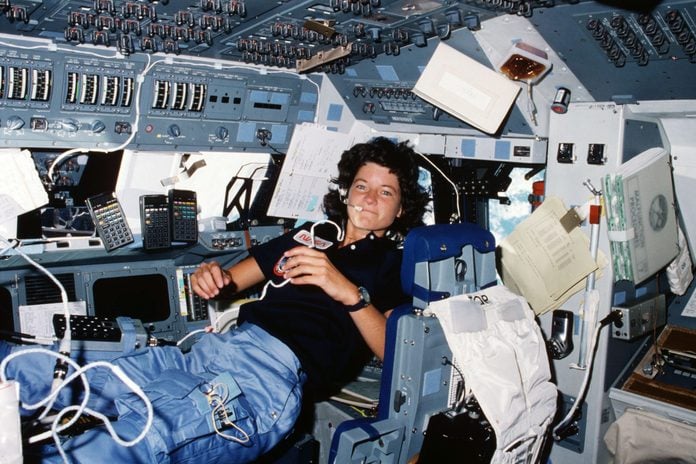
Sally Ride had to teach NASA about periods
Before her historic 1983 spaceflight, Sally Ride had to teach NASA engineers some basic biology. The men at NASA who were packing her stuff for her weeklong flight asked if 100 tampons would be enough for seven days. As the story goes, they asked if 100 is “the right number.” “No. That would not be the right number,” Ride replied. She told them they could safely cut it down by half. You can read more about 30 women pioneers who changed the world.
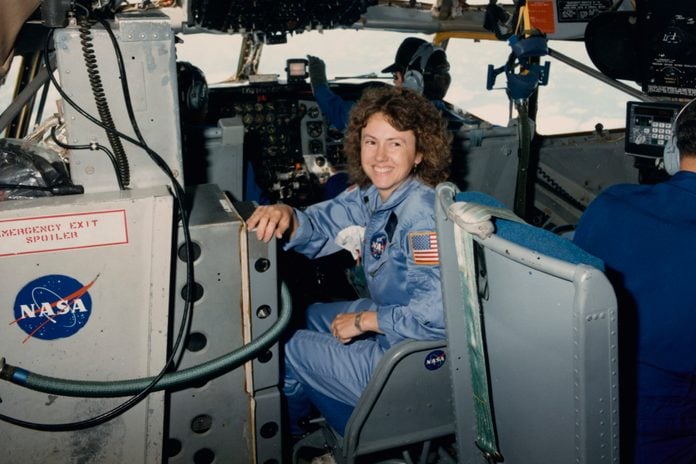
Classroom lessons from the Challenger are now available online
Christa McAuliffe was selected out of 11,000 teachers to be the first teacher on a space mission. Unfortunately, that was the ill-fated Challenger, which exploded 73 seconds after launching on January 28, 1986, killing McAuliffe and the six astronauts aboard.
The idea behind the program was that McAuliffe would film lessons in space that would then be shown in classrooms throughout the country. Though that never happened, her lessons will live on, thanks to two other educators-turned-astronauts, Joe Acaba and Ricky Arnold, who filmed them on the international space station in 2018. Some of the lessons are currently available on the NASA website.
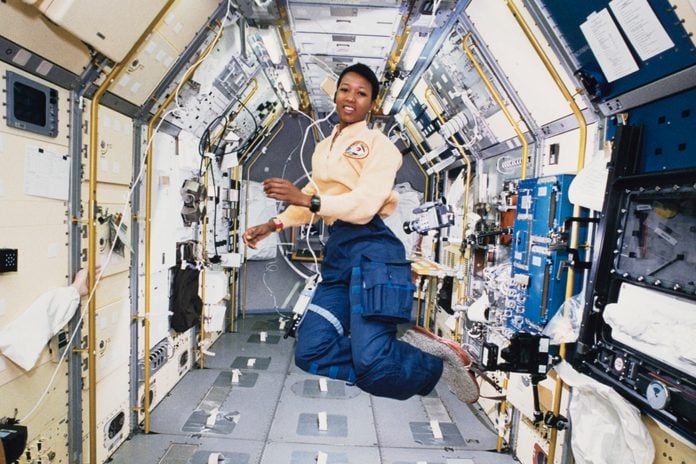
Mae Jemison is working to promote science literacy
It has been more than 25 years since Mae Jemison became the first African-American woman in space, and she’s still inspiring aspiring scientists. One of her goals is to get more people involved in STEM (science, technology, engineering, and math) through her work with Science Matters. As Jemison explained in an interview with SheKnows, the program is also about giving people the information they need to be able to understand the world around them.
An interesting fact about Jemison: She’s actually afraid of heights. According to the U.S. Department of Energy, she relied on her strength and ego to push her into space, and the history books.
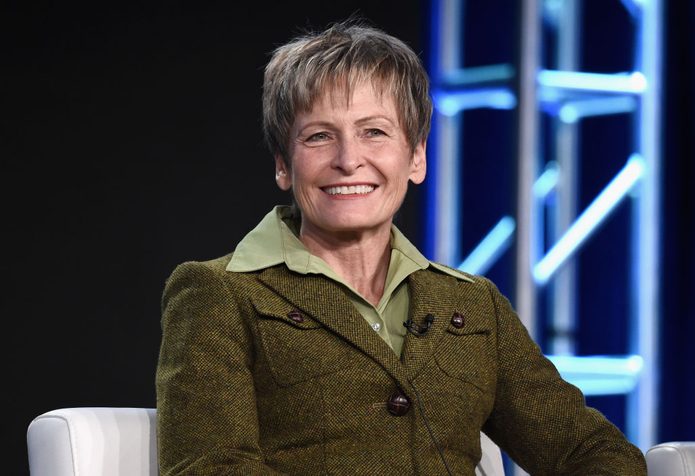
The American who has spent the most time in space is a woman
Astronaut Peggy Whitson holds several NASA records, including being the American who has spent the most cumulative days in space, as well as the most cumulative days for a woman of any nationality. She is also tied with another (male) astronaut for the most spacewalks: ten. And in November 2016, at the age of 56, she became the oldest woman to ever go to space, as well as the first woman to command the International Space Station twice. Here are 16 more amazing women you probably didn’t learn about in history class.
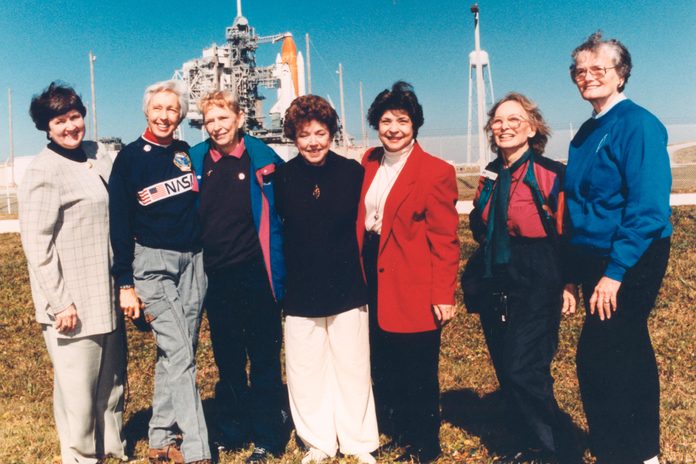
Women outperformed John Glenn on pre-flight tests
Before John Glenn and the rest of the Mercury 7 went into space in the early 1960s, a group of women— known as the Mercury 13—went through the same extensive battery of tests. Mercury 13 member Wally Funk also described some of the physical tests on Makers: “There was not one hair, tooth, skin, fingernails…through my whole body that was not tested, poked, prodded. They were finding out what every girl in that program was made of—just like they did to the guys.”
The difference is, many of them outperformed Glenn and his colleagues. For example, one test involved putting the participant in a soundproof isolation tank filled with 93.56 degree Fahrenheit (skin temperature) water, achieving total sensory deprivation. In previous experiments, researchers found that the absolute limit for humans to exist in these conditions was six hours. At least three of the women stayed in for more than ten hours before that phase of testing was called off. The men, on the other hand, merely had to sit in a soundproof, dark room instead of a float tank. Glenn discovered a pen and paper in the room and passed the time writing poetry. Still, he only lasted four hours.
The program ended in 1962, before any of the women made it to space. Vice President Lyndon B. Johnson wanted to make sure the first American in space was strong and masculine, in order to actively compete with the Soviet Union. At the bottom of a memo about the program, Johnson wrote “Let’s Stop This Now!” in uncharacteristically large handwriting. Find out some concerning ways women still aren’t equal to men.
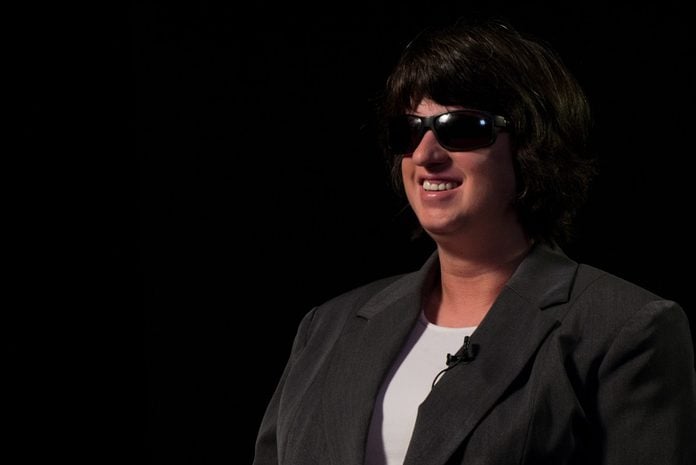
Courtney Ritz is making NASA more accessible
Shortly after Courtney Ritz was born, she was diagnosed with a rare form of eye cancer and lost her eyesight completely by the age of five. As a child, she dreamed of being an astronaut, and though she has never been to space, Ritz has been an integral part of NASA since she started working there in 2001. She later worked as a web accessibility coordinator, ensuring that NASA’s Internet materials were available to as many people as possible, regardless of any disabilities.
“Although I wasn’t able to be an astronaut or an actor, my path led me to NASA. Here, I have been able to pursue a rewarding career, and participate in theatrical productions along with others in my NASA family,” Ritz said in a statement on the NASA site. “I even met my husband here. I’ve gotten to live my dreams of being an astronaut at Space Camp, once even as commander of the Enterprise Orbiter.” Read about 15 moments that changed women’s history forever.
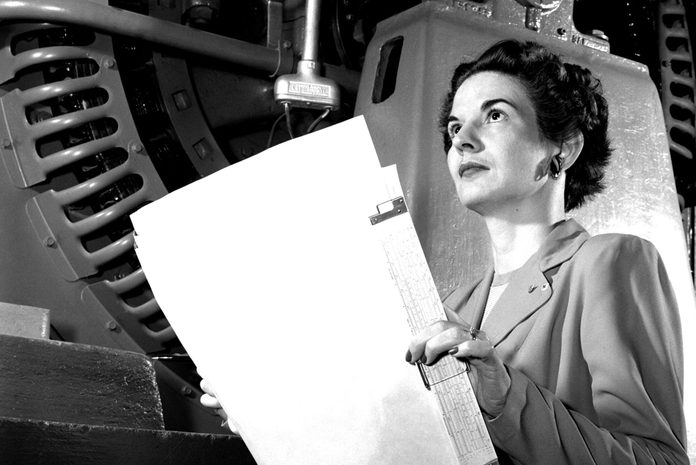
Kitty O’Brien Joyner’s work helped define modern aeronautics
In addition to being the first woman to graduate from the University of Virginia’s engineering program, Kitty O’Brien Joyner also became NASA’s first female engineer in 1939. During her 32-year career, she specialized in the mechanics of wind tunnels, including testing new aircraft designs prior to being used in flight. Eventually, she rose to the rank of Branch Head of the Facilities Cost Estimating Branch, Office of Engineering and Technical Services.
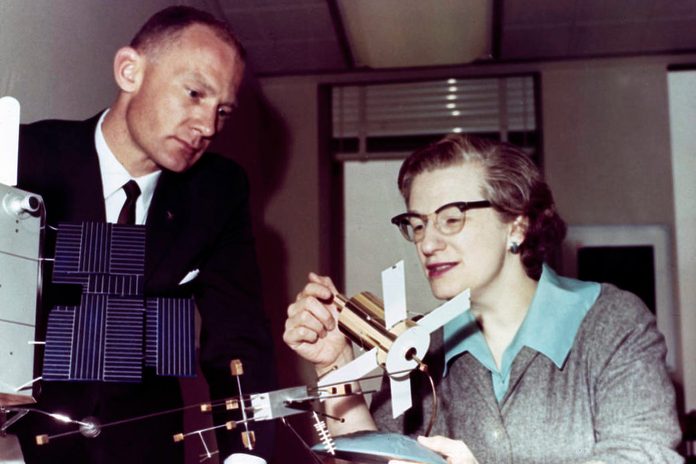
A woman is largely responsible for the Hubble Telescope
Known as the “Mother of Hubble,” Nancy Grace Roman was one of the first female executives at NASA where she was instrumental in establishing the Hubble Telescope program structure. She was also NASA’s first chief astronomer. At a time when very few women worked at NASA, Roman developed and budgeted several programs and helped launch three orbiting solar observatories and three small astronomical satellites. During her career, she made multiple crucial scientific discoveries, including that stars made out of hydrogen. In addition to telescopes and other space-related technology, here are 13 everyday items you had no idea NASA invented.
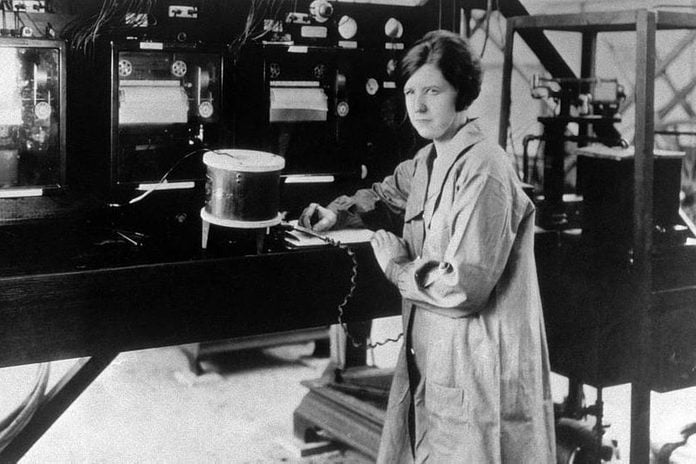
Pearl Young helped shape NASA’s public image
In 1922, Pearl Young was one of the first women hired by the National Advisory Committee for Aeronautics (NACA), the predecessor of NASA. Though she started off in the field of instrumentation, she came to realize that NACA’s technical writing could be significantly improved. To fix this, she created a new technical writing system that is still used today. Young established a new communications office and assembled a team of many women. Her work in finessing NASA’s written communications helped to shape the organization’s public image.
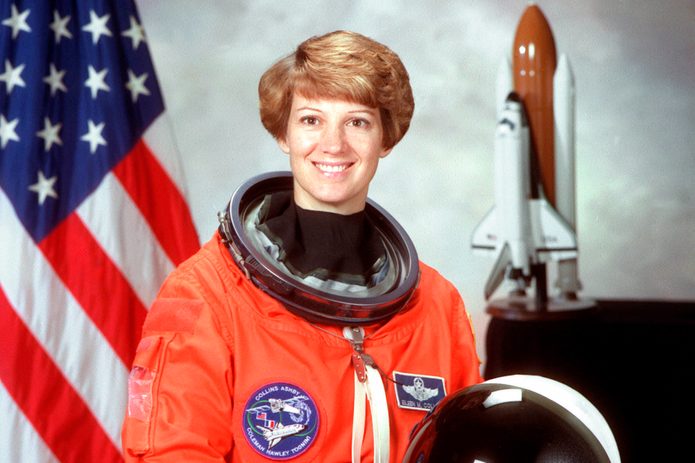
At least 65 women have gone to space with NASA
In the organization’s history, at least 65 women have traveled to space with NASA, according to the most recent statistics from the organization. Among these women are some known for incredible accomplishments, including Eileen Collins, who, in 1999, became the first woman to be a space shuttle commander. Four years prior, she was also the first woman to pilot a space shuttle.
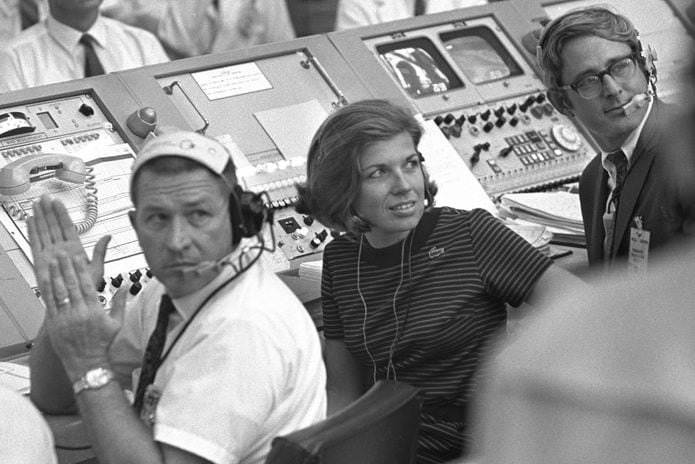
The woman who helped launch Apollo 11
There is an iconic photo taken on July 16, 1969, from NASA’s Launch Control Center, as the engineers watched Apollo 11 take off. It’s filled with rows and rows of men, but if you look carefully, you can spot one woman: JoAnn Morgan. Not only was she an instrumentation controller for the Apollo 11 lift-off, but she also made many other significant contributions during her career with NASA. These include being the first woman at NASA to win a Sloan Fellowship, the first woman division chief, the first woman senior executive at Kennedy Space Center, and the first woman director of Safety and Mission Assurance, among others. Next, learn about 14 of the first famous women in flight.
Sources:
- CNN: “The face of the Perseverance landing was an Indian American woman”
- The BBC: “Closed environments facilitate secondary transmission of coronavirus disease 2019 (COVID-19)”
- Space.com: “The 1st All-Woman Spacewalk: Photos, Videos and Celebratory Tweets”
- Spaceflight Now: “Koch marks record stay in space for female astronaut”
- Essence: “Black Girl Magic History: 8 Facts You Should Know About The Real ‘Hidden Figures’”
- Popular Science: “A brief history of menstruating in space”
- CNN Health: “Three decades after the Challenger disaster, Christa McAuliffe’s lessons will finally be taught”
- SheKnows: “What the First African-American Female Astronaut Wants Us to Focus on Now”
- Space.com: “Peggy Whitson Breaks US Record for Most Time in Space by an Astronaut”
- Space.com: “Peggy Whitson: Record-Holding Astronaut”
- NASA.gov: “NASA Station Astronaut Record Holders”
- American Physiology Society: “A forgotten moment in physiology: the Lovelace Woman in Space Program (1960–1962)”
- Margaret A. Weitekamp: Right Stuff, Wrong Sex: America’s First Women in Space Program
- Women@NASA: “Courtney Ritz”
- Google Arts & Culture: “15 Game-Changing Women of NASA”
- NASA.gov: “Nancy Grace Roman: NASA’s First Chief Astronomer”
- NASA.gov: “Pearl I. Young”
- NASA.gov: “Celebrating Women’s History Month: Most Recent Female Astronauts”
- NASA.gov: “Rocket Fuel in Her Blood: The Story of JoAnn Morgan”
